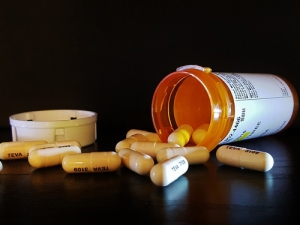University of Waikato breaks ground on new medical school
The University of Waikato has broken ground on its new medical school building.
 In the seven years from 2005 to 2012, annual per capita antibiotic consumption by community patients in NZ increased by 43% – an average of 6% a year.
In the seven years from 2005 to 2012, annual per capita antibiotic consumption by community patients in NZ increased by 43% – an average of 6% a year.
The era of 'peak antibiotics' might have arrived, but not because of antibiotic use in farm animals in New Zealand.
In an examination of 26 EU and EEA countries in 2012, the estimated usage of antimicrobials in food producing animals varied from 3.8mg active ingredient/kg biomass in Norway to 341 in Italy. NZ's usage that year was 9.4, third after Iceland (a country not known for its large animal population).
In contrast, the overall level of antibiotic use by community patients in NZ in 2010 was less than used in Greece, Belgium, France and Italy, but was greater than in Spain and most other European countries. Research just published in the New Zealand Veterinary Journal (lead author Dr Eric Hillerton) reports that usage of antimicrobials for human health in NZ in 2012 was estimated at 121mg active ingredient/kg biomass. Of the countries compared, NZ ranked 16th.
A quick calculation suggests that use in humans was 12.9 times the use in animals. These facts are important in the blame game that is occurring because of the increase in reports of antibiotic resistance. At the beginning of April, five patients admitted to Dunedin Hospital were reported to have screened positive for an antibiotic resistant bacteria, known as vancomycin-resistant enterococcus (VRE). This has increased concerns raised at the end of last year when resistance was found to colistin, the 'last resort' antibiotic. The authors of the report suggested the cause was likely to be "overuse in farm animals".
Too often the distinction isn't made about 'where'.
In many countries prophylactic antibiotics are administered to keep a herd or flock disease free. By operating in a disease-free environment, animals are able to grow faster or put more energy into food production than they would if they were suppressing an infection.
But in NZ antibiotic use is heavily regulated. It is controlled by veterinarians of prescribing and authorisation practices and administered only in response to sickness and ill health.
In considerable contrast, it appears the human population is awash with antibiotics.
In the seven years from 2005 to 2012, annual per capita antibiotic consumption by community patients in NZ increased by 43% – an average of 6% a year. University of Auckland lead researcher Dr Mark Thomas stated that "antibiotic use in NZ in recent years is comparable with those countries considered to have profligate levels of antibiotic use, and so have high levels of antibiotic resistance".
The problem for the future is that the path to approval and release of a new antibiotic is long and expensive.
Heathline.com suggests that pharmaceutical companies spend an average of US$5 billion in research and testing for each new drug they bring to market.
These costs cover the approximate 80% of drugs emerging from laboratories which fail during the testing process (safety or efficacy). The European Observatory on Health Systems and Policies estimates that large pharmaceutical companies need annual sales of up to US$800 million to recover R&D costs.
Although smaller companies might need only US$100 million to cover investments, they also rely on larger companies to buy their successful drugs. Overall it is more lucrative for pharmaceutical companies to concentrate on drugs that can be used regularly without losing effectiveness, such as antidepressants, statins and anti-inflammatory medications, than to develop new ones.
Many pharmaceutical companies have ceased research on antibiotics, and the US Food and Drug Authority has approved only two systemic antibiotics in the past five years. This is an 88% drop from the mid-1980s.
Concerns about antibiotic resistance and antibiotic use in farm animals should be used in marketing the NZ product globally, and to extract a premium price from the consumer.
And everybody should consider whether they can recover from the latest bug with rest and relaxation rather than with drugs.
• Jacqueline Rowarth is professor of agribusiness, The University of Waikato.
Legal controls on the movement of fruits and vegetables are now in place in Auckland’s Mt Roskill suburb, says Biosecurity New Zealand Commissioner North Mike Inglis.
Arable growers worried that some weeds in their crops may have developed herbicide resistance can now get the suspected plants tested for free.
Fruit growers and exporters are worried following the discovery of a male Queensland fruit fly in Auckland this week.
Dairy prices have jumped in the overnight Global Dairy Trade (GDT) auction, breaking a five-month negative streak.
Alliance Group chief executive Willie Wiese is leaving the company after three years in the role.
A booklet produced in 2025 by the Rotoiti 15 trust, Department of Conservation and Scion – now part of the Bioeconomy Science Institute – aims to help people identify insect pests and diseases.